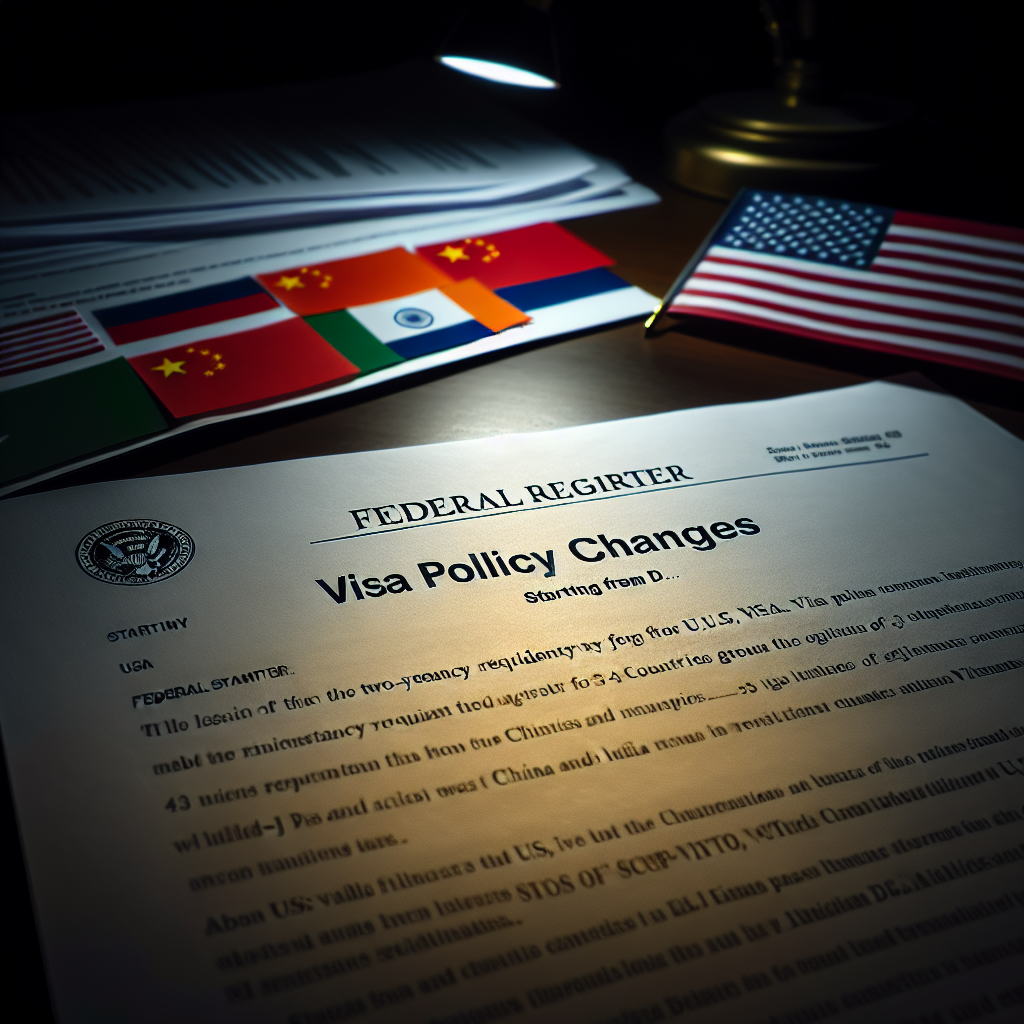The U.S. Department of State announced today the lifting of the two-year residency requirement for J-1 visas for 34 countries including China and India. Visa holders are no longer required to return to their home country for two years.
According to documents in the Federal Register, starting from December 9th, the U.S. Department of State has updated the J-1 visiting scholar visas, eliminating the two-year domestic residency requirement for J-1 visa holders from 34 countries, including China, India, South Korea, Saudi Arabia, and the United Arab Emirates.
The J-1 visa is one of the visa categories issued by the U.S. government for foreign individuals to come to the U.S. for studying, training, or engaging in research activities.
The U.S. government mandates that individuals holding J-1 visas who come to the U.S. must return to their home country to reside for two years after their stay in the U.S. ends. Individuals who need to exceed the stay limit in the U.S. due to certain reasons are required to apply for a waiver to exempt them from the two-year residency requirement.
This is the first significant revision the U.S. Department of State has made to the skills list relating to visiting scholar visas in the past 15 years. The State Department’s Exchange Visitor Skills List includes countries and professional fields that are deemed crucial to U.S. national development.
Historically, J-1 visa holders from countries listed in the skills list were required to return to their home country and reside for two years upon completing their programs in the U.S.
In this round of revisions, the State Department has removed 34 countries from the list but the rule still applies to 27 countries.
The State Department stated that these countries were removed from the list based on the following reasons:
– Per capita GDP: Countries with higher per capita GDP may no longer be considered to have critical skill demands.
– Country size: Larger countries are believed to have more resources to develop their own talents.
– Immigration trends: Countries with higher numbers of emigrants.
– Economic development: Countries that have made significant progress in technology, education, and healthcare.
The removal of the two-year residency requirement for J-1 visas may help the U.S. retain top foreign talent.
For J-1 visa holders from the affected countries, they now have greater flexibility. They can now explore other immigration options to the U.S., such as H-1B visas or green cards, without requiring a waiver or no-objection statement.
U.S. employers will also benefit from having access to a larger pool of foreign talent in STEM, healthcare, and engineering fields.
The updated J-1 policy also eliminates obstacles for high-skilled workers seeking long-term job opportunities in the U.S.
Previously, the requirement for J-1 visa holders to return to their home country for two years meant that they could not apply for an extension, switch to other non-immigrant statuses, or apply for permanent residency within the U.S. after completing their exchange programs. They had to return to their home country and wait two years before reapplying to enter the U.S. in statuses such as H or L or apply for permanent residency.
Although not all J-1 visas are subject to the two-year residency requirement, there are few exceptions to this rule.

